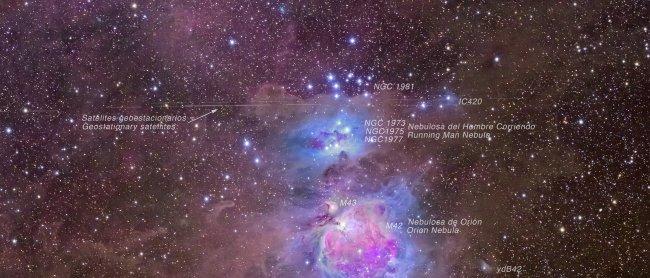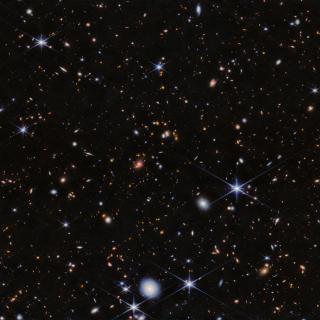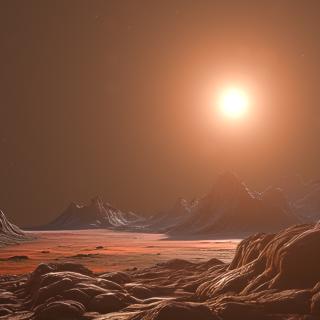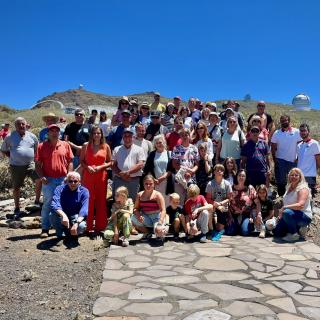A digital reflex camera, a telephoto lens, and a night sky whose quality and darkness are recognized around the world. These are the ingredients of "GALÁCTICA", a project which will be carried out by the Instituto de Astrofisica de Canarias (IAC). What makes it different from other similar maps of our Galaxy is that for the first time it will not be made with telescopes in major professional observatories.
To build up this panorama, a modified DSLR full-frame camera and a telephoto objective lens will be used, mounted on an equatorial mount to compensate for the rotation of the Earth. Both of these can be controlled using software, either in situ or remotely. The instruments will be placed in a "follow" mode on the TAD (Open Outreach Telescope, with the initials for its Spanish version), at the Teide Observatory (Izaña, Tenerife), and it will take images of the northern hemisphere sky during a six month period. The first part of the project, “GALÁCTICA-N” will make up 70% of the total, and will cover regions and objects of interest close to the Galactic plane, such as the constellation of Orion, the Andromeda galaxy, and the Pleiades star cluster. The rest of the sky, in the southern hemisphere, "GALÁCTICA-S" will be covered in 2018.
“We are in no doubt that the exceptional atmospheric conditions at the Teide Observatory will enable us to obtain high quality images", says Miquel Serra-Ricart, the coordinator of the project, who is also the administrator of the Observatory, and an IAC researcher. "In this way", he adds, "GALÁCTICA" will be a work of reference for the information it contains, and also because it can be understood directly (it will be in the visible range, similar to that of the human eye), and because it will show in detail the stars and the other objects”.
Stellar neighbourhood
The visible universe is formed by galaxies, which are huge groups of stars, nebulae, and interstellar dust, among which we find the Milky Way. The Solar System, our cosmic neighbourhood, and the Earth, our home, are within this huge city of stars composed of some 200,000 million stars, and spanning some 100,000 light years. It is shaped like a huge wheel, with spiral arms inside it, which rotates in space once every 230 million years.
Thanks to the position which we occupy in the Milky Way, about two thirds of the way from the centre to the edge, we are in an excellent position to observe it. If we were nearer to the centre the increased density of stars would cover the whole sky, and we could not pick out the structure of the Galaxy directly. So we have a splendid panoramic view of the Galaxy, and we can also observe its surroundings and other more distant galaxies.
Planning and execution of the project
The first and most important part is to take all the images needed to build up the gigamosaic of the Milky Way. The field on the sky covered by the digital camera is of 3.4 º x 5.1 º, with a limiting magnitude of 17 and a scale of rather more than 3 arcseconds per pixel.
Each field will be photographed with long and short exposures to obtain high resolution images of zones with a large range of surface brightness (such as bright emission nebulae) and at the same time to increase the signal o nose ratio. Also calibration exposures will be made (darks, bias, and flats) to improve the quality of the final image
The field on the sky to be covered will be 360 º by 60 º (30 º either side of the Galactic equator). “GALÁCTICA” will cover a total of 33% of the sky in some 13,120 exposures. Only dark nights will be used, those with no Moon or with the moonlight less than 15% of its maximum, which means that only 8 nights per month will be observable.
According to the planning, the observations of “GALÁCTICA-N” will be carried out during 7 months from the Teide observatory, taking some 8,746 exposures of the northern sky. Broken down into months:
· February: Galactic longitudes 260º - 220º (constellations of the Compass, Puppis, Canis Major, Lepus, Unicornius, Hydra).
· March: Galactic longitudes 220º - 180º (constellations of Orion, Unicornius, Canis Minor, Gemini and Taurus).
· April: Galactic longitudes 180º - 140º, (constellations of Taurus, Auriga, Perseus, and Camelopardus).
· May: Galactic longitudes 340º - 20º (constellations of Scorpius, Corona Australis, Sagittarius, Ophiuchus)
· June: Galactic longitudes 20º - 60º (constellations of Scutum,Serpens, Aquila,Sagitta, Hercules, and Delfinus).
· July: Galactic longitudes 60º - 100º, (constellations of Lyra, Cygnus, Draco)
· August: Galactic longitudes 100º - 140º (constellations of Cepheus, Cassiopaeia, Andromeda).
Then, in approximately 4 months, the project will be complete with "GALÁCTICA-S" photographing the Milky way from the southern hemisphere. “GALÁCTICA” is a project funded by the FECYT (Spanish Foundation for Science and Technology) of the Ministry of Economy, Industry and Competitivity.
More information:
· Web of the project: http://galactica.astroaula.net/proyecto/
· Facebook of GALÁCTICA: http://galactica.astroaula.net/canal-facebook/
· Galactic fauna (HD images): https://flic.kr/s/aHskQ9fJzA
Contact:
· Miquel Serra-Ricart: mserra [at] iac.es (mserra[at]iac[dot]es) and +34 922 605 750.



